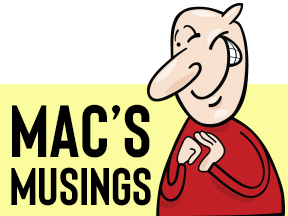Magnetic Resonance Imaging (MRI) uses strong magnetic fields and radio waves to create images of your body including organs, muscles, bones and discs. An MRI is a tool that can be used to aid in clinical decision making, in addition to taking a thorough history and physical exam. In the case of lower back pain, an MRI is generally not needed or clinically necessary to make a diagnosis and to successfully treat lower back pain. Of course, there is a time and place for imaging, but your clinical history and physical exam will guide the need for imaging of your lower back. In many cases, having an MRI unnecessarily can potentially cause more harm than good.
To put things into perspective, here are some stats from Brinjikji et al. 2014 that looked at MRI findings of people without back pain and this is what they found: 37% of 20 year olds, 80% of 50 year olds and 96% of 80 year olds had disc degeneration. 30% of 20 year olds, 60% of 50 year olds and 84% of 80 year olds had disc bulging. These findings show that disc degeneration and disc bulging are usually very normal in the process of ageing, they do not cause pain and should not cause alarm or distress. In many cases, individuals with lower back pain can have abnormal findings, but these abnormal findings may not be in the area of the body that is producing their pain or symptoms. So, what the heck do we do now? Long story short – it’s complicated but can always be managed. Pain is complicated because it can be influenced by biological factors (i.e. genetics vulnerabilities, physical health, tissue status), psychological factors (i.e. self-esteem, coping skills, social skills), social factors (i.e. family circumstances, schooling, and peer support), stress, lack of sleep, poor nutrition and lack of exercise. To narrow in on biological or physical factors only (i.e. MRI findings), we may be missing some big pieces of the pain management puzzle. Pain is an experience, which can be influenced by more than just your biology. It certainly does not mean that your pain is not real or unwarranted, but multiple strategies may be required to manage your pain over the long term. Successful management of lower back pain can include, but is not limited to, graded aerobic and strength based exercise, medications, prioritizing sleep, utilizing positive stress coping strategies, eating well to support your body, meditating, addressing your mental health with a qualified provider and spending time with friends or loved ones (hugs go a long way friends!).
Need help putting together your pain puzzle? Seeing a physiotherapist can be a great place to start. If you have any questions feel free to reach out to audrey@movetherapeutics.ca.


